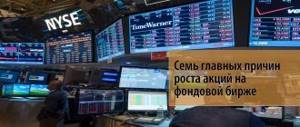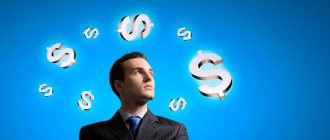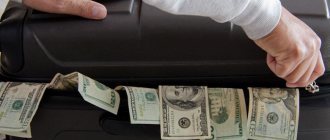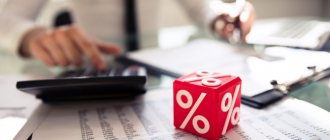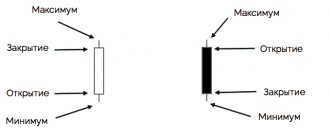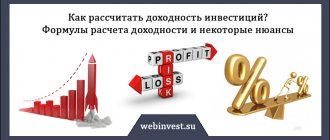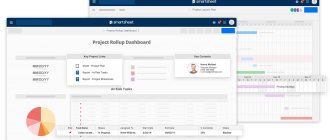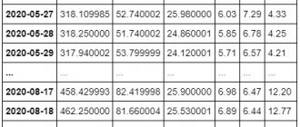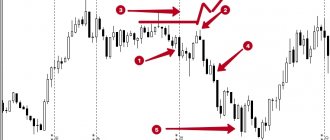Coronavirus is causing a lot of unrest, not only in financial markets, but in all areas of activity. Although most investors have been seriously affected by the virus, a number of them are benefiting from the coronavirus scare. In the article we We will analyze the best protective assets for an investor during the 2021 crisis, which will not only protect your savings, but also help you get out of the economic recession with a good profit.
Quick navigation
What are protective assets and when are they in demand?
The demand for protective assets is growing as the crisis intensifies. No one can say for sure when, in what forms and scale a financial crisis will occur.
I recommend watching a video from my YouTube channel about capital protection.
Therefore, let’s look at what signs can be used to determine its onset:
- Statistics indicate a slowdown in global economic growth;
- Volatility is rising in all markets;
- Leading indices are experiencing deep drawdowns;
- Developing country currencies are entering a zone of turbulence;
- Traditional cycles do not work, for example, the Christmas rally has been cancelled.
In Russia, the problems are aggravated by the expectation of the next package of sanctions, in the United States - by unpredictable decisions on trade wars, in the world - by the outflow of liquidity from emerging markets due to the Fed rate increase.
Protective assets do not provide guarantees of profitability. Their goal is to hedge portfolio risks and create a “safe haven” situation in times of sharp decline in quotes. What a protective asset should “be able to do”:
- Maintain relative stability in a volatile market;
- Be minimally exposed to price fluctuations;
- Protect your portfolio from inflation;
- Hedge currency risks;
- Be sufficiently liquid.
In our recently published article on beta (β), we looked at how to select assets based on this metric. A portfolio acquires protective functions when the share of securities with a beta below 1 in it increases. The investor’s task in anticipation of a crisis is to bring the portfolio’s beta factor closer to zero values so that it is least dependent on unpredictable market volatility. It is important to review the composition of investment instruments so that there are enough protective assets among them.
conclusions
Thanks to protective assets, the investor's portfolio suffers less from the instability of the securities market. During a crisis period, such instruments do not decrease in price and even become more expensive. Some of them are able to provide profitability in any economic conditions.
Let us clarify once again that the main protective instruments include gold, reliable government and corporate bonds, bank deposits and cash currency. Some of the least risky stocks can be classified as anti-crisis assets only conditionally.
We must remember that protection against obvious market risks can have a downside. A complete shift from stocks to gold and reliable bonds can reduce the portfolio's return to a level that does not cover inflation. Therefore, everyone is looking for the optimal balance of various assets to ensure maximum profits with minimal risks.
Security bonds
Priority is given to short papers (up to 3 years). Long bonds tend to be more sensitive to any changes in the market. It is advisable to tie duration to your investment horizon. Floating rate securities are generally more protected from changes in the policies of the Central Bank and the Federal Reserve. Eurobonds are denominated in hard currency and often increase their coupon yield during a crisis. However, volatility does not allow them to be fully classified as defensive assets. The credit rating of bond issuers is not lower than BB-. The debt burden should not be high. We check the financial statements of issuers (see how to do this here).
Low-liquid bonds, including municipal bonds, become riskier than usual during a crisis. In a portfolio you can only hold securities of wealthy subjects (Moscow, oil and gas regions). The same applies to most corporate bonds. The issuer must either have foreign currency earnings or stable ruble cash flow. Examples: oil and gas sector, telecoms, mining industry. Metallurgists are more vulnerable since the demand and price of metal fall first.
I also recommend reading:
How to trade S&P500 futures
S&P500 futures are another way to make money on indices
Securities with the highest degree of security are called risk-free. These usually include US Treasury bonds. It is the most popular and liquid defensive asset in the world. Despite the huge government debt, which has exceeded $21 trillion, investors continue to shift to Treasuries in case of any negativity in the markets. They are guaranteed by the status of the dollar as a world currency, the power of the largest economy on the planet and the high level of confidence in the obligations of the US government. Investors take into account the fact that in times of global turmoil, the American economy looks stronger than others, even if the crisis itself began in the United States. Bonds are given added value by their rising yields. The downside is limited availability for unqualified investors.
Diversification
The cornerstone of modern portfolio theory (Modern Portfolio Theory, MPT).
According to it, during market downturns, a well-diversified portfolio will perform better than those that include a small set of assets. Diversification involves creating portfolios that include a wide range of different financial instruments and asset classes. This allows you to reduce the unsystematic risk that arises when investing in a specific company - as opposed to the systematic risk that arises when investing in specific markets in general.
Defensive shares
Defensive stocks typically underperform in bull markets and underperform in bearish markets, and their main attribute is stability. Such securities are, as a rule, of no interest to speculators. Priority is given to issuers whose products are in constant demand and are not subject to cyclicality. If the company’s business is of strategic importance for the state’s economy, even better. It is desirable that demand is not limited to the Russian market. A good dividend history will be a plus.
Examples of defensive stocks are electricity, telecoms, gold mining, food production, pharmaceuticals, public infrastructure construction. Just a few years ago, such securities included representatives of the banking sector. But sanctions risks and a focus on falling ruble incomes of the population have taken banks out of the protective category. Particularly worth mentioning are politically dependent assets. On the one hand, they receive support from the state. On the other hand, they are subject to sanctions pressure. Examples are VTB, Sberbank, which lost part of their capitalization due to sanctions. Politically neutral Lukoil can be considered an example of a defensive asset in these conditions. Its advantages also include stable dividends, a share repurchase program, and foreign exchange earnings.
There are conflicting opinions regarding the protective capabilities of consumer sector securities. Some experts believe that constant demand for essential products will guarantee a stable cash flow. Others point to statistics showing retailers' performance deteriorating in line with the market. This is facilitated by a decrease in consumer demand even in the discount segment.
Second- and third-tier stocks, especially those with high debt loads, are the least predictable during periods of crisis. Small capitalization companies are not included in priority government business support programs. As a rule, during a crisis their drawdown is greater than that of first-tier shares.
Holding large long positions in stocks during a crisis is not an optimal solution. The exception is the highest quality issuers with low debt and stable earnings, or better yet, with a cache reserve. Long positions in quality securities can be hedged with short positions in stocks from other industries or in index futures. To learn about the risks that margin shorting poses for a novice investor, see this article.
Residential and commercial real estate
Smart investments in real estate allow you to get quite a substantial profit in a relatively short period of time. In addition, apartments, office premises, buildings and structures are actually existing tangible objects. This circumstance always adds confidence to the investor.
High-yield real estate investments involve two main strategies. The first is to buy a property at one price and then sell it for more. This is a common speculative approach. The second strategy involves purchasing an apartment or non-residential premises for the purpose of subsequently renting them out.
In addition, if an investor has serious financial capabilities, he can purchase real estate not only in Russia, but also abroad. Apartments and non-residential premises located in large cities in highly developed countries of Western Europe, East Asia and North America can bring the greatest profit. We are talking about China, Japan, USA, Canada, Switzerland and Germany. If you are interested in specific cities, these are Shanghai, Tokyo, New York, Toronto, Zurich and Dusseldorf.
Reliability is not the only advantage of investing in real estate. In addition, this is a highly profitable asset, the value of which will constantly increase. The last statement will be true provided that you buy an apartment or office in the right location.
However, investing in real estate also has significant disadvantages. First of all, this is the low liquidity of the asset. Simply put, it is quite difficult to sell an apartment or office space quickly at an attractive market price. In addition, real estate implies constant expenses that fall on its owner. These are taxes, expenses for utilities and repairs.
Currency as a defensive asset
Currency diversification of assets, as well as a financial airbag in hard currency, are part of the risk management strategy. During crises, the US dollar becomes the beneficiary. Demand for it always increases in case of force majeure. The euro is not so stable during financial cataclysms, as it is susceptible to the influence of European populism. The British pound is more reliable, but due to Brexit it may be volatile. Traditionally, during crises, demand for the yen and Swiss franc increases, but these currencies do not have a sufficient degree of liquidity within Russia. The yuan never became one of the generally accepted world currencies. The reason is not entirely market methods of regulating it.
I also recommend reading:
Exchange-traded funds Tinkoff NASDAQ, Tinkoff Gold and Tinkoff iMOEX
New exchange-traded mutual funds from Tinkoff Capital
Against the backdrop of the crisis, the ruble is under the influence of several negative factors at once:
- Outflow of non-resident funds from emerging markets;
- Purchases of foreign currency by the Ministry of Finance, which in difficult times converts rubles into foreign exchange reserves;
- The political influence of energy exporters is growing, and they are interested in a weak ruble;
- Oil becoming cheaper due to decreasing global demand.
- Added to the usual factors is the permanent threat of sanctions.
However, completely excluding ruble assets from the portfolio, and even more so from the financial safety net, is short-sighted. Firstly, the ruble is needed for everyday expenses. Secondly, the crisis may not develop into an acute phase and suddenly give way to a reversal. Then investors who prematurely got rid of the ruble and Russian assets will suffer losses.
Hasbro (HAS).
While consumers sharply cut back on their spending in 2008, toy and entertainment company Hasbro may have unexpectedly thrived. Hasbro's revenue grew for the fourth year in a row in 2008, while earnings grew for the eighth year in a row, and its quarterly dividend increased 25%. Thanks in part to the strong performance of its licensed brand, HAS stock has thrived during a period of turmoil thanks to franchises such as Star Wars, Iron Man, The Incredible Hulk and Spider-Man. Hasbro's own Transformers franchise also performed well, further demonstrating that entertainment often benefits people during economic downturns.
Yield 2008: 16,8%.
Profitability over 10 years: 160%.
Other defensive assets
Gold seems to many to be a classic defensive asset, which usually grows against the backdrop of economic problems. People consider it an unshakable value, the basis of the gold standard (even though it was abolished half a century ago). The graph shows how its quotes soared during the active phase of the crisis of 2008–2009 and how they decreased as its consequences were overcome by 2012.
The amplitude of quotes bears little resemblance to the movements of a protective asset. As an investment idea, gold has many disadvantages. It does not provide dividend, rent or coupon income. Physical metal is illiquid, trade in it is subject to VAT. There is no guarantee that gold will rise, even in the event of a crisis. The only good thing is that it doesn't fall as low as the stock market. Much in the price of the precious metal depends on the political decisions of central banks to replenish gold and foreign exchange reserves.
On average, real estate prices in the Russian Federation have hardly been growing for several years (with the exception of the largest megacities). However, Russians still choose this asset as a material embodiment of reliability. In times of crisis, the cost per square meter drops noticeably, although not as much as shares: in 2008–2009. Housing in Moscow has fallen in price in rubles by 25–30%, and the stock market has fallen by up to 70%. But real estate does not have the necessary property for a protective asset - liquidity. Rather, it is an opportunity to invest long-term at the maximum drawdown. Foreign real estate is no exception. Russian investors remember well how houses in Spain fell in price by 35% from the peak in 2007 by 2013.
The most common protective asset is a bank deposit. However, ruble deposits are subject to the risks of devaluation, and foreign currency deposits have almost no interest rate. There is also a limitation: the insured amount is within 1.4 million in ruble equivalent.
The protective function of mutual funds and ETFs weakens during a crisis, because the value of underlying assets, including indices, falls. However, abruptly getting rid of them to protect the portfolio would also be a dubious decision. The best funds are those that invest in bonds and dividend-paying shares of global companies with a capitalization of $50 billion or more. Their default is unlikely, and coupons and dividends are paid stably.
I also recommend reading:
Initial placement fund from Vostok-Zapad Management Company
How do I make money on IPOs through initial public offering funds?
At first glance, cryptocurrencies can act as a defensive asset. Because of the crisis, the demand for something that is not subject to inflation and devaluation always increases. However, the price of cryptocurrencies often changes under the influence of events that are far from the real economy: hard forks, changing positions of regulators, the launch of futures or ETFs for Bitcoin, etc. Therefore, I would not recommend betting on the protective functions of cryptocurrencies.
Gold in crisis
The yellow metal is used as a haven for capital in turbulent times. The largest investors and funds try to protect themselves from possible losses of money during stock market crashes.
Increased demand in times of crisis pushes gold prices up. Of course this doesn't always happen. But in most cases, gold goes up in price.
During calm times, gold can become a very risky asset. Investor interest in it is waning. And... it's getting cheaper. Sometimes very much.
Where can I buy?
In the bank using compulsory medical insurance (unidentified metal accounts). The bad thing is that banks themselves set the buying and selling rate. Of course, they focus on world quotes. But they can give unfavorable prices (spreads) to those wishing to make transactions with precious metals. That is, selling a little more expensive, buying back a little cheaper.
It's like buying currency. Depending on the greed of the bank, we can buy gold very expensive (not at a very fair price).
Especially when gold prices on world markets begin to rise rapidly. Banks immediately want to steal more money. Unreasonably raising the course.
On the stock exchange using ETFs. In Russia this is an ETF - FXGD. For international investments, the largest foreign ETF is GLD or IAU.
Pros . Exact copying of the gold rate. The possibility of price manipulation is excluded.
Minus. Commissions for owning fund shares.
For FXGD it is 0.45% per year. From the value of shares owned. For GLD - 0.4%. IAU - 0.25%
Article on the topic: 9 ways to invest money in gold
Other scenarios
In your situation, there may be other possible troubles from a future crisis. But crises also create opportunities. But you will have to work them out yourself.
To understand possible risks and ways to combat them, it is good to get an overall picture of the crisis. List its various manifestations and connect them with cause-and-effect relationships. This will allow you to see both potential sources of problems and sources of financial gain.
I posted a similar picture of the crisis in 2014. All predictions obtained with its help (regarding deposits, bonds, dividends, the situation by industry, inflation) came true with high accuracy. Study it as an example and work through a possible future crisis and your risk scenarios.
Dollar Tree (DLTR).
Do you think the equivalent of Fix Price, a chain of stores where every item costs $1 or less, could resonate with disadvantaged consumers? Dollar Tree is that kind of store, and its decision to pivot from parties to basic household supplies like cleaning supplies and groceries looked brilliant in 2008. CEO Bob Sasser called it "the key to our relevance in good times and bad," and he was right. Wisely doubling the number of stores that accept food stamps has helped DLTR outperform the market by nearly 100 percentage points this year.
Profitability for 2008: 60,8%.
Profitability over 10 years: 415%.
Anheuser-Busch Inbev (BUD).
To summarize, recession-proof industries so far have welcomed discount retail, entertainment and healthcare. It's safe to say that Anheuser-Busch Inbev is a mixture of all three, combining cheap beer with self-medication and the need to escape reality. Revenue grew 5% in 2008, which was good but nothing special. However, the main catalyst contributing to the stock's huge run in the bear market was the acquisition of Anheuser-Busch into the hands of Inbev. Mergers and acquisitions typically reward shareholders with a premium, and this deal was no different.
Profitability for 2008: 39,4%.
Profitability over 10 years: 90%.
H&R Block (HRB).
Tax preparation giant H&R Block boasts a fairly recession-proof business: After all, death and taxes are guaranteed in all economic conditions. In 2008, when blue chips such as General Electric Co. (GE) was preparing to cut or eliminate its dividend, companies paying out solid income streams to common shareholders were quite rare. HRB, however, was one of them, offering approximately 4% dividend yield. More than 12 years later, H&R Block looks just as resilient, enjoying a 4.6% dividend, stable free cash flow and four years of dividend growth. A low beta of around 0.2 is typical for investments that could outperform the next recession.
Yield 2008: 25,8%.
Profitability over 10 years: 45%.
